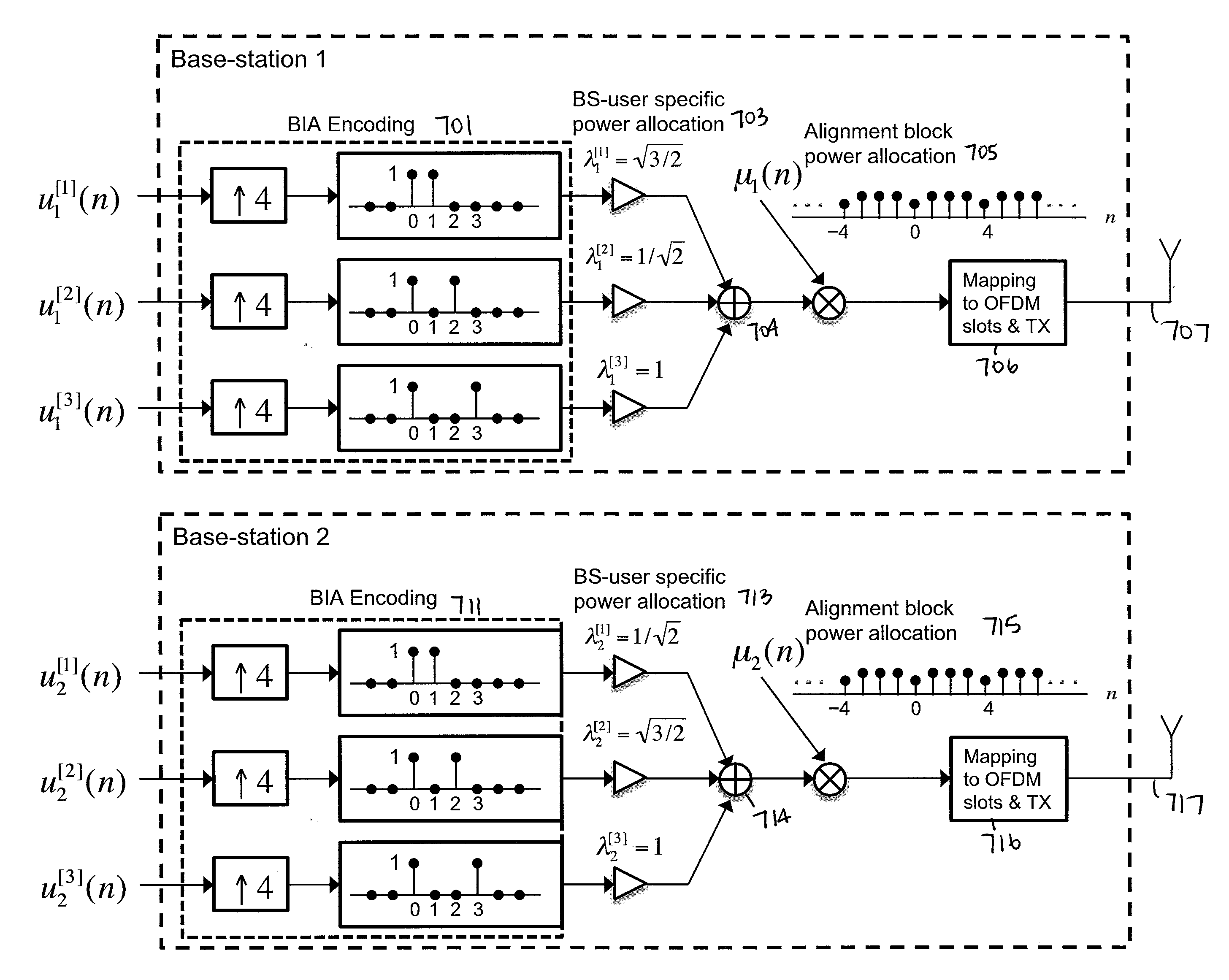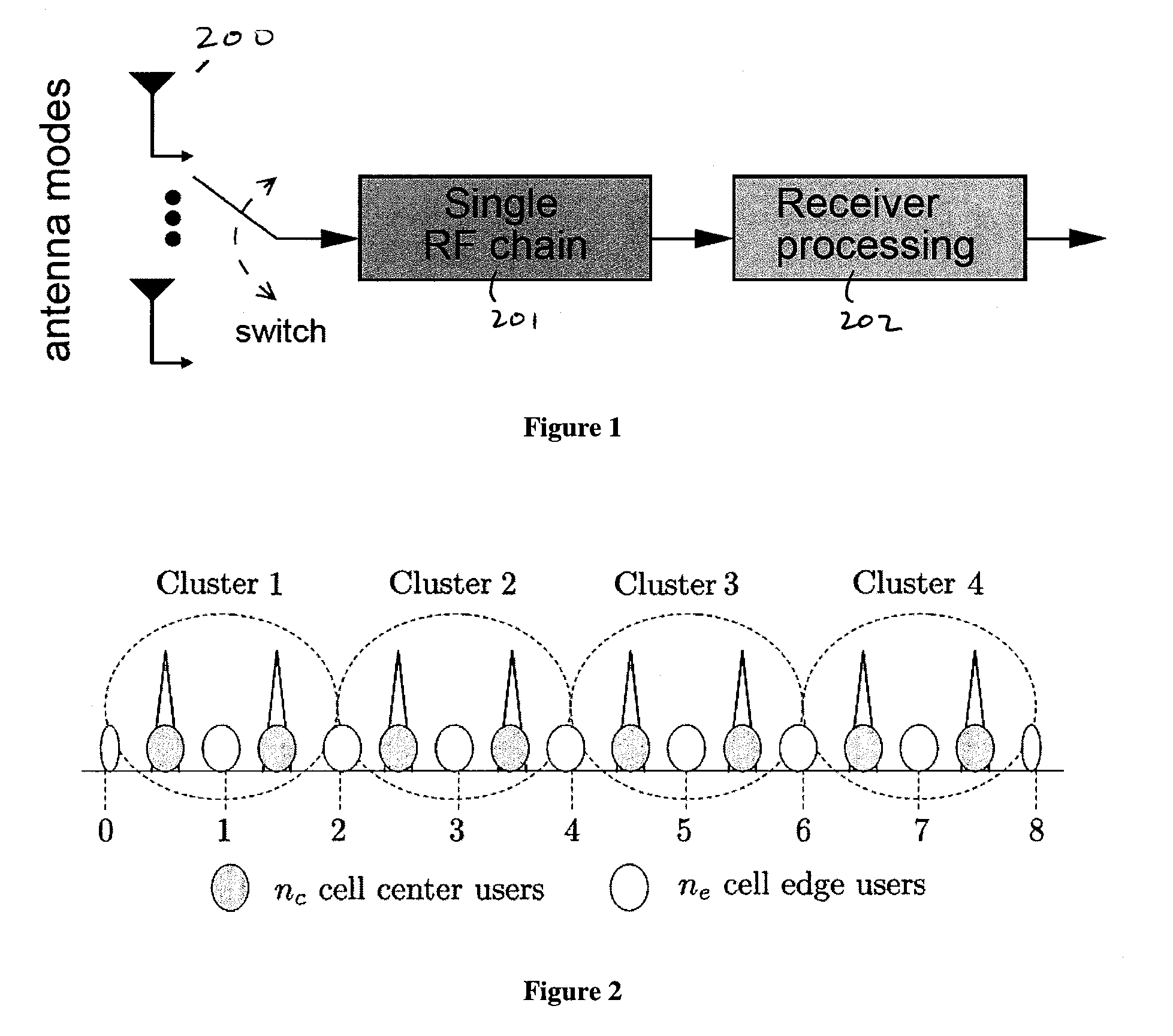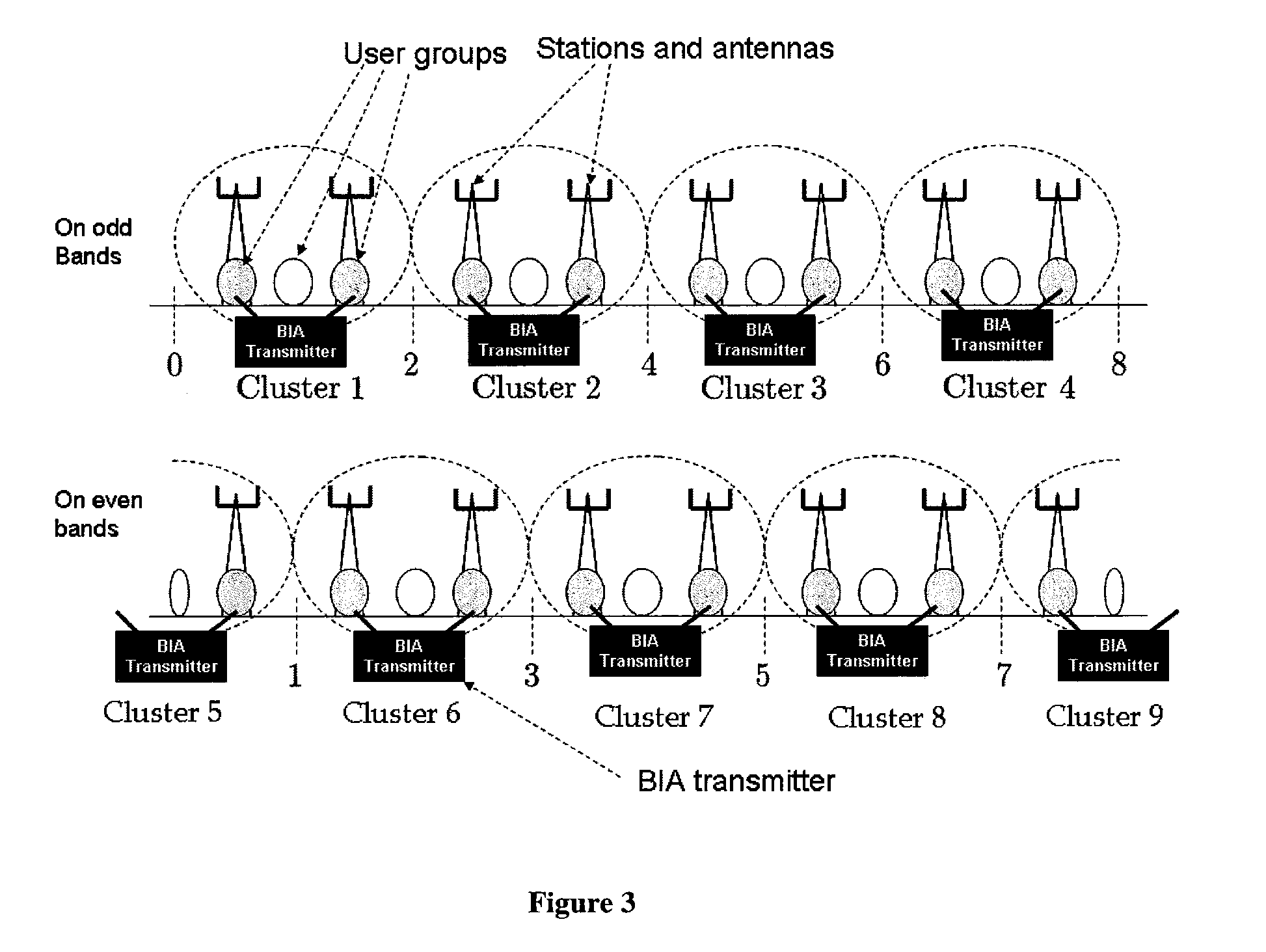Method and apparatus for communicating with blind interference alignment using power allocation and/or transmission architecture
a transmission architecture and blind interference technology, applied in the field of multi-input multiple output (mimo) wireless transmission systems, can solve the problems of limiting the net spectral efficiency increase that can be obtained, knowing the channel state between transmitting and receiving antennas, and requiring system cos
- Summary
- Abstract
- Description
- Claims
- Application Information
AI Technical Summary
Benefits of technology
Problems solved by technology
Method used
Image
Examples
example 1
Original BIA scheme with M=2, K=2
[0062]Encoding and Transmission: This is the easiest and most illustrative case of the BIA process. In this case the alignment code has length L=3. It delivers to each user, user k=1 and user k=2, a single 2 dimensional symbol (or block of 2-dimensional symbols). That is, N=1.
[0063]Let s[k] denote the 2×1 coded symbol (or coded block) for users k, for k=1 and 2, and x(t) denote the transmitted signal (an M-dimensional quantity) at slot t. The code is as follows:
x=[x(1)x(2)x(3)]where[x(1)=s[1]+s[2]]←Blocktype-1[x(2)=s[1]x(3)=s[2]]←Blocktype-2(equation1)
[0064]Here a stream s[k] is a vector of two dimensions of the form
s[k]=[u1[k]u2[k]]
where u1[k] is ith the information bearing stream supporting data intended for user k.
[0065]Recall that each “symbol” can refer to a single numerical value, or can signify a block of such symbols. For simplicity in exposition, the word “symbol” refers herein to either case.
[0066]In order to facilitate interference alignme...
PUM
 Login to View More
Login to View More Abstract
Description
Claims
Application Information
 Login to View More
Login to View More - R&D
- Intellectual Property
- Life Sciences
- Materials
- Tech Scout
- Unparalleled Data Quality
- Higher Quality Content
- 60% Fewer Hallucinations
Browse by: Latest US Patents, China's latest patents, Technical Efficacy Thesaurus, Application Domain, Technology Topic, Popular Technical Reports.
© 2025 PatSnap. All rights reserved.Legal|Privacy policy|Modern Slavery Act Transparency Statement|Sitemap|About US| Contact US: help@patsnap.com



